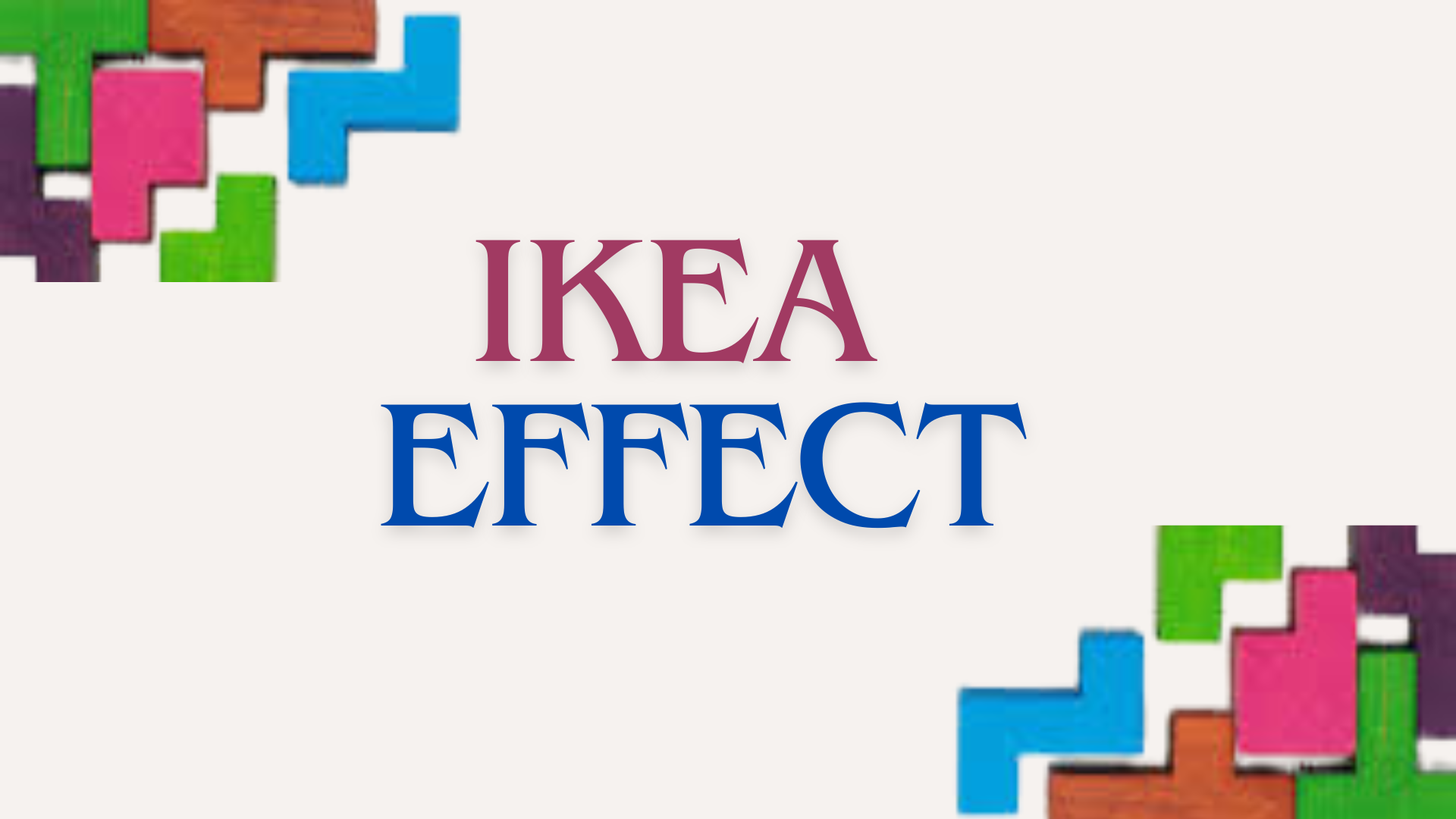
In a world where consumer preferences shape the landscape of success for businesses, understanding the intricacies of human behaviour becomes paramount.
Today, we unravel a psychological phenomenon that not only influences purchasing decisions but also holds the key to fostering lasting connections between consumers and brands. Enter the fascinating realm of the IKEA effect, a cognitive bias that transcends mere transactions, giving birth to a profound sense of value and ownership.
Let’s delve into what makes the IKEA effect a game-changer in the world of marketing and how businesses can harness its transformative power.
What is the IKEA effect?
The IKEA effect is a cognitive bias indicating that individuals tend to place a higher value on something they have personally created. By allowing consumers to participate in the creation process, brands enhance the consumer’s connection to the product, thereby increasing its perceived value.
This is why brands frequently leverage the IKEA effect by incorporating customisation options in their products.
Understanding the IKEA Effect is crucial for entrepreneurs and marketers as it provides valuable insights into consumer behaviour and preferences.
The implication of the IKEA effect on entrepreneurs and marketers
The implications of the IKEA effect for entrepreneurs and marketers are noteworthy, and adhering to these principles can be advantageous:
Increased value perception
Consumers are often willing to pay a premium for products that involve some assembly, creating a mutually beneficial situation. This approach enables businesses to cut costs on marketing and assembly, leading to higher profit margins. Consumers, in turn, feel a sense of empowerment as they actively contribute to the assembly process, enhancing their perception of receiving a good deal.
Tailored personal expression
Businesses specialising in customisable products, like Lego, stand to gain the most from the IKEA effect. However, the impact is still substantial in less-customisable items. For instance, clothing companies now offer made-to-measure attire, involving consumers in the tailoring process and fostering a sense of personalisation.
Consumer engagement and loyalty
The involvement of consumers in the assembly process fosters a deeper connection with the product. This heightened engagement often translates into increased brand loyalty as customers feel a sense of ownership and pride in their creations.
Word-of-mouth marketing
Satisfied and engaged customers are more likely to share their positive experiences with others. The unique aspect of hands-on assembly can become a talking point, leading to organic word-of-mouth marketing that can significantly benefit a brand’s reputation.
Perceived quality
The DIY (Do It Yourself) nature of the assembly process can positively impact the perceived quality of the product. Consumers may associate the effort they put into assembling the product with a higher overall quality, contributing to a positive brand image.
Customisation beyond assembly
The IKEA effect extends beyond physical assembly. Businesses can leverage this concept by providing customisation options in various aspects of the product, such as colour, features, or accessories. This approach empowers consumers to tailor the product to their preferences, enhancing the overall value proposition.
Educational marketing opportunities
The assembly process offers an educational component. Businesses can use this as an opportunity to provide instructional content, fostering a positive and supportive consumer experience. This educational aspect can contribute to customer satisfaction and competence in product use.
Empower your brand, engage your audience, and elevate your success with the IKEA effect. Take charge of customization, foster loyalty, and build a lasting connection with consumers.








![Read more about the article [Funding alert] Ecommerce enablement startup GoKwik raises Rs 40 Cr in pre-Series A led by Matrix Partners India](https://blog.digitalsevaa.com/wp-content/uploads/2021/09/Image0y7r-1630996586908-300x150.jpg)

![Read more about the article [Weekly funding roundup Feb 6-19] Sharp rise in VC inflow with EV startups in focus](https://blog.digitalsevaa.com/wp-content/uploads/2022/11/funding-roundup-LEAD-1667575602969-300x150.png)